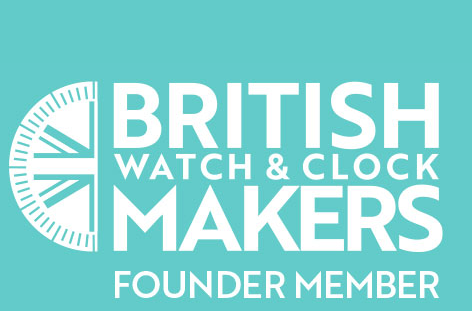From start to finish: how we make our watches
Have you ever wondered how we make our watches?
You may have seen our behind the scenes photos and videos in our London workshop but we wanted to show you step by step how we hand make the watch you're wearing…
Step one: Printing
First up in the watchmaking process is printing.
We stock more than 100 vibrant inks in our print room, all of which get mixed by hand to achieve the perfect colour for our watch designs.
All of our watches vary in the amount of ink that’s needed, we’re talking about 50g to 0.005g, so precision is key!
We print every glass, disc and dial individually, and depending on the design of the watch - sometimes this can be extremely time consuming.
Once the printing is complete, we can move onto the next step…

Step one and a half: Gilding
A handful of our watches are gilded, which means after the initial design is printed, we add their final touches by hand, using gold or silver leaf to give them an eye-catching metallic effect.
Some of our watches are gilded in many colours such as Ricochet, which includes yellow, rose gold and palladium.
Designs with multiple layers of print and gilding take us weeks to make, mainly because each layer has to fully dry, before we can continue.

Step two: Assembly
Once the watch design has been printed, it's time to assemble.
We have two types of watch movements: quartz and automatic. They are assembled in slightly different ways and take a lengthy amount of time to complete.
The components are arranged in a specific order, for our quartz watches, the order follows as: the watch movement, the dial, the hour disc and then the minute disc.
For our mechanical jump hour watches the order is slightly different and goes: the watch movement, the hour disc, the dial and then the minute disc.
This is because our most popular mechanical watches include a jump hour feature, meaning that all numbers apart from the one currently telling the time need to be covered to provide the illusion of the hour jumping from one number to the next.
For both types of watches, we need to make sure that the hour and minute discs aren’t touching each other or the dial, as this can affect the time keeping.
Another part of our quality control process is making sure that the discs aren’t loose on the rivet - a small metal component that helps keep the disc attached to the movement.
We also have to make sure that the discs for all our watches are completely dust-free to make sure the illusion of transparency is perfect.
This is one of the longest steps when we are assembling as it may only be noticed when the watch is completely put together.
Next we cut the factory stem (the arm of the winding crown) down to the correct length and remove the factory winding crown and add our own MJW crown.
Our watches are then set to the time and tested for time keeping. We leave them for 12 - 24 hours to make sure they are working perfectly before we send them out.
Our small team of watch technicians are extremely passionate about their craft with a few even owning their own jewellery businesses, which you can check out here. 
Step three: Packaging
Once the watches are all made, we hand them over to our customer service team.
If you’ve added an engraving to the back of your watch, this will also happen at this stage, (you can add an engraving to any of our watches with a steel back case).
The customer service team then pack up each order, ready to be sent out.
Here they add your selected watch strap and check for any last minute imperfections.
Our customer service team is on hand to help with every step of the way with your order, from shipment to receiving your watch!

In a nutshell, that is how we make our watches from start to finish.
We put a lot of love and care into each individual watch and we love to show you what we get up to behind the scenes, you can see all the action on social media at @mrjoneswatches.



